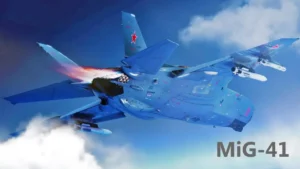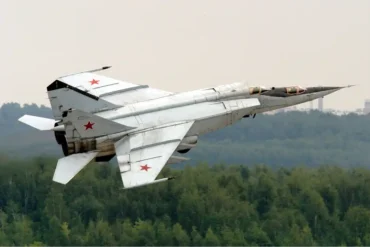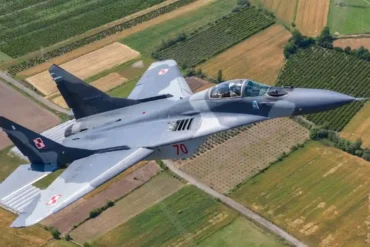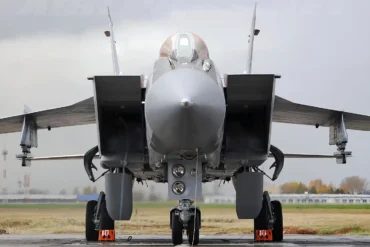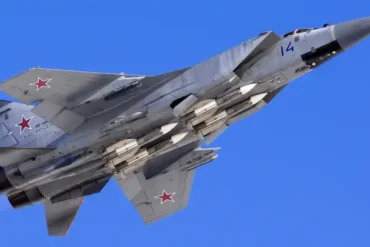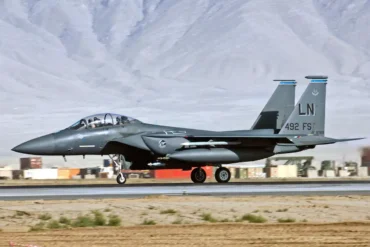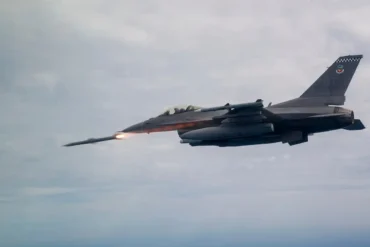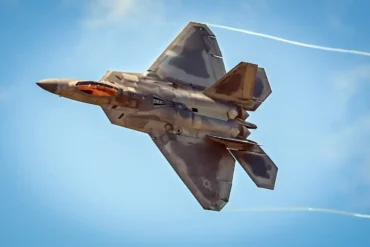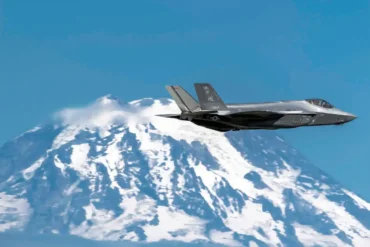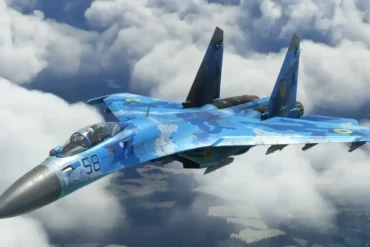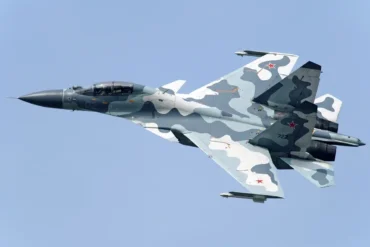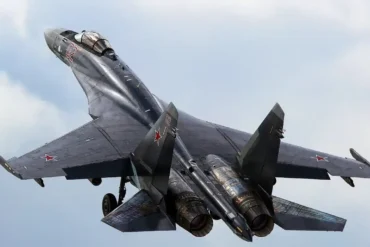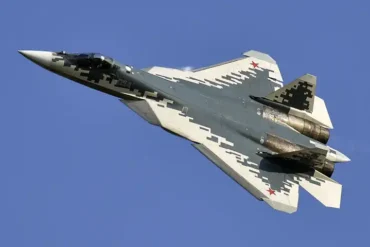The MIG-41, Russia’s proposed sixth-generation fighter jet, is poised to redefine the boundaries of aerial combat with its hypersonic speed capabilities. As a replacement for the aging MIG-31 Foxhound, the MIG-41 has been designed with cutting-edge technology that enables it to reach Mach 4 and Mach 5, four to five times the speed of sound. This extraordinary speed is not just a technological achievement; it is the cornerstone of the MIG-41’s potential to dominate the skies in ways previously thought impossible.
In this article, we explore the top speed of the MIG-41, its implications for modern warfare, the technological innovations behind it, and the factors that make this fighter jet one of the most advanced machines in aviation history.
The MIG-41: A New Era of Hypersonic Flight
The MIG-41 is being developed to push the limits of modern aviation by combining speed, stealth, and advanced weaponry. Designed to fly at speeds between Mach 4 and Mach 5, the MIG-41 is a hypersonic interceptor that will outpace current fighter jets and engage threats faster than ever before. But to truly understand the significance of this, we must first break down what hypersonic flight means and why it is such a leap forward.
What is Hypersonic Speed?
Hypersonic flight refers to speeds greater than Mach 5, or five times the speed of sound. For comparison, the fastest jets in service today, such as the F-22 Raptor, operate at speeds just below Mach 3. The MIG-41, by contrast, will operate at speeds four to five times faster than the speed of sound, allowing it to intercept and neutralize airborne threats at unprecedented velocities. Such speeds make the aircraft incredibly effective in air-to-air combat, as well as in air-to-ground strikes and strategic reconnaissance missions.
To achieve hypersonic speeds, the MIG-41 requires an advanced propulsion system, capable of handling extreme heat and air compression at those speeds. This necessitates the development of next-generation engines that are both powerful and efficient.
MIG-41’s Speed: Mach 4 to Mach 5
Why Mach 4 to Mach 5 Matters
The MIG-41 is designed to operate between Mach 4 and Mach 5, which translates to approximately 3,000 to 3,800 miles per hour. At such speeds, the aircraft will be capable of intercepting targets at vast distances before they can even react. To put this into perspective, hypersonic missiles travel at similar speeds, making them nearly impossible to intercept by existing air defense systems. By achieving speeds in this range, the MIG-41 will be a formidable adversary for any enemy aircraft or missile system.
Implications for Air Combat
The MIG-41’s incredible top speed has multiple strategic implications:
- Faster Interception: The MIG-41 will be able to intercept enemy aircraft or missiles far quicker than anything currently in service. This makes it an ideal platform for defensive operations, such as protecting national airspace or responding to incoming threats in near real-time.
- Enhanced Tactical Flexibility: The ability to fly at hypersonic speeds allows the MIG-41 to cover large areas in a short amount of time, providing a significant strategic advantage. The aircraft will be able to strike enemy targets and retreat before adversaries can mount a meaningful defense.
- Precision Strike Capability: In addition to speed, the MIG-41 will carry advanced hypersonic missiles and potentially laser weapons. These capabilities will allow the aircraft to engage high-value targets with extreme precision, further elevating its effectiveness in modern warfare.
Technological Innovations Behind MIG-41’s Speed
Engine Development: Ramjets and Scramjets
Achieving speeds between Mach 4 and Mach 5 requires more than just powerful engines—it demands cutting-edge ramjet or scramjet technology. The MIG-41 is expected to utilize scramjet engines, which are designed to operate efficiently at hypersonic speeds.
Unlike traditional jet engines, which rely on compressing and igniting air at subsonic speeds, scramjets compress air at hypersonic speeds without slowing it down, allowing for greater thrust generation and efficiency. The MIG-41’s scramjet engines will be capable of withstanding extreme air friction and heat generated by its high speeds, a major challenge for the development of hypersonic flight.
Heat Resistance and Materials Science
The immense friction generated by speeds over Mach 4 results in temperatures that can exceed 1,000°C (1,832°F). To prevent the aircraft from burning up at such high speeds, the MIG-41 must incorporate advanced materials that can withstand these intense conditions. This includes high-temperature alloys, composite materials, and heat-resistant coatings.
Russian engineers are reportedly working on new alloys and composites that not only offer durability but also possess the flexibility required for aerodynamic performance at hypersonic speeds. The MIG-41’s airframe will need to maintain its structural integrity while minimizing drag and maximizing stealth capabilities.
Stealth Design and Radar Absorption
Stealth is a critical component of modern combat aircraft, and the MIG-41’s top speed will not hinder its radar signature. The aircraft is being designed with advanced radar-absorbing materials and a low radar cross-section, ensuring that it remains virtually undetectable to enemy radar systems despite its impressive speed. The stealthy design, combined with its ability to operate at such high velocities, makes the MIG-41 a highly lethal asset in modern aerial warfare.
Comparison with Other Hypersonic Aircraft
The MIG-41’s performance puts it in direct competition with several other hypersonic aircraft currently being developed around the world, including the United States’ Next Generation Air Dominance (NGAD) program and China’s next-generation fighter jets. However, the MIG-41 stands out due to its combination of hypersonic speed and stealth capabilities, as well as its emphasis on long-range interception.
- F-22 Raptor: The F-22, one of the most advanced fifth-generation fighter jets in the world, can reach speeds just below Mach 3. While incredibly fast, the F-22 falls short of the MIG-41’s hypersonic performance. The MIG-41’s ability to travel at Mach 4 to Mach 5 gives it a significant edge in speed, allowing it to engage targets at a much faster rate.
- F-35 Lightning II: The F-35, another advanced stealth fighter, has a top speed of Mach 1.6. While the F-35 excels in versatility and stealth, it cannot match the MIG-41 in terms of speed, making the MIG-41 a dominant force in intercepting high-speed threats.
- Chinese Stealth Fighters: China’s J-20 and other stealth aircraft are reported to be capable of speeds near Mach 2.5 to Mach 3, still well below the MIG-41’s hypersonic potential. The MIG-41’s Mach 4 to Mach 5 range places it in a category of its own.
Operational Implications of the MIG-41’s Speed
Combat Superiority in High-Speed Engagements
The MIG-41’s ability to reach hypersonic speeds will allow it to dominate in both offensive and defensive roles. Here’s how its speed will affect military strategy:
- Air Superiority: The MIG-41’s hypersonic speed will allow it to quickly challenge and neutralize enemy air assets. Whether engaging enemy fighters or missile systems, the MIG-41 can close the distance between itself and its target at a speed that traditional jets cannot match.
- Strategic Advantage: The ability to conduct deep-strike missions or penetrate enemy defenses without being detected will make the MIG-41 a formidable strategic asset. Its speed ensures that it can travel long distances and remain unpredictable to enemy radar systems, giving it a significant tactical advantage.
- Enhanced Intercept Capability: With the MIG-41’s top speed and stealth technology, Russia can quickly intercept and eliminate incoming threats—whether from missiles or hostile aircraft—before adversaries have a chance to react.
Near-Space Operations
One of the most ambitious capabilities of the MIG-41 is its potential to operate at near-space altitudes. Hypersonic speed will allow the aircraft to reach altitudes where few other aircraft can follow, potentially engaging high-altitude satellites or performing reconnaissance missions in near-space environments. This could be an essential component of modern warfare, where space-based assets play a critical role in global defense strategies.
Conclusion: MIG-41’s Top Speed and Its Place in the Future of Aviation
The MIG-41 represents the pinnacle of aerial combat technology, combining unprecedented speed, stealth, and advanced weaponry. Its ability to reach Mach 4 to Mach 5 will make it one of the fastest aircraft
ever built, capable of intercepting targets with exceptional precision and speed. As Russia’s next-generation interceptor, the MIG-41 is positioned to redefine the future of hypersonic flight and global defense strategies. Its development is a statement of intent, showcasing Russia’s commitment to maintaining air dominance well into the 21st century.
